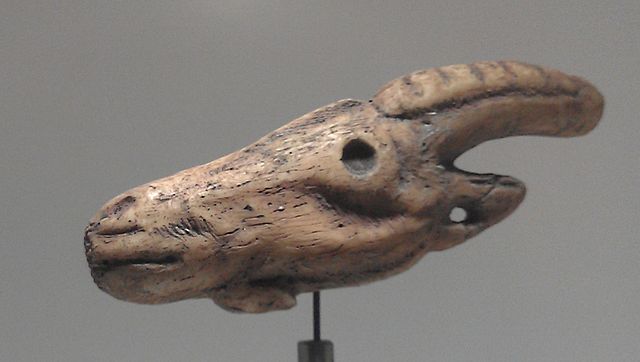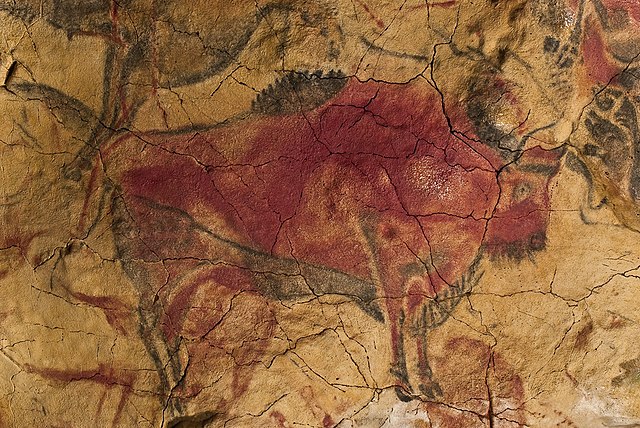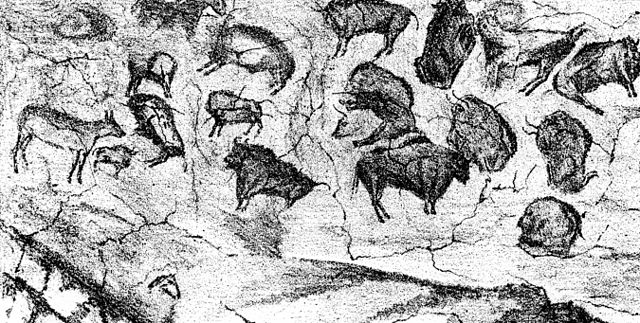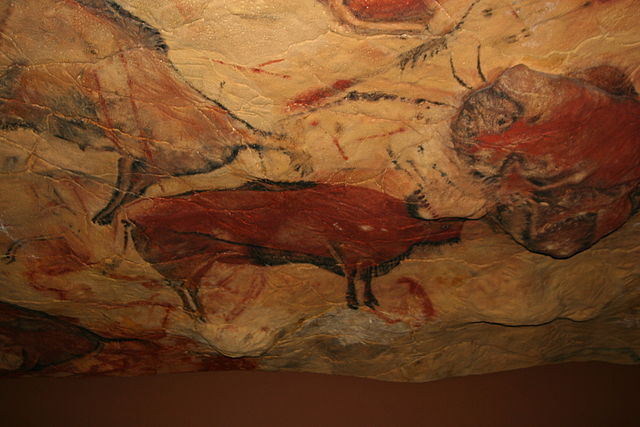Cave of Altamira and Paleolithic Cave Art of Northern Spain
The Cave of Altamira and Paleolithic Cave Art of Northern Spain is a grouping of 18 caves of northern Spain, which together represent the apogee of Upper Paleolithic cave art in Europe between 35,000 and 11,000 years ago. In 2008, they were collectively designated a World Heritage Site by UNESCO.
Replica of the Cave of Altamira at the National Archaeological Museum (Madrid)
Image: 12 Vista general del techo de polícromos
Image: Teverga 06
Image: Bisontes de La Covaciella (España)
The Cave of Altamira is a cave complex, located near the historic town of Santillana del Mar in Cantabria, Spain. It is renowned for prehistoric cave art featuring charcoal drawings and polychrome paintings of contemporary local fauna and human hands. The earliest paintings were applied during the Upper Paleolithic, around 36,000 years ago. The site was discovered in 1868 by Modesto Cubillas and subsequently studied by Marcelino Sanz de Sautuola.
Magdalenian polychrome bison
Bison on the roof of the pit.
Great hall of polychromes of Altamira, published by M. Sanz de Sautuola in 1880.
Reproduction of the Cave of Altamira in the Deutsches Museum, Munich.








